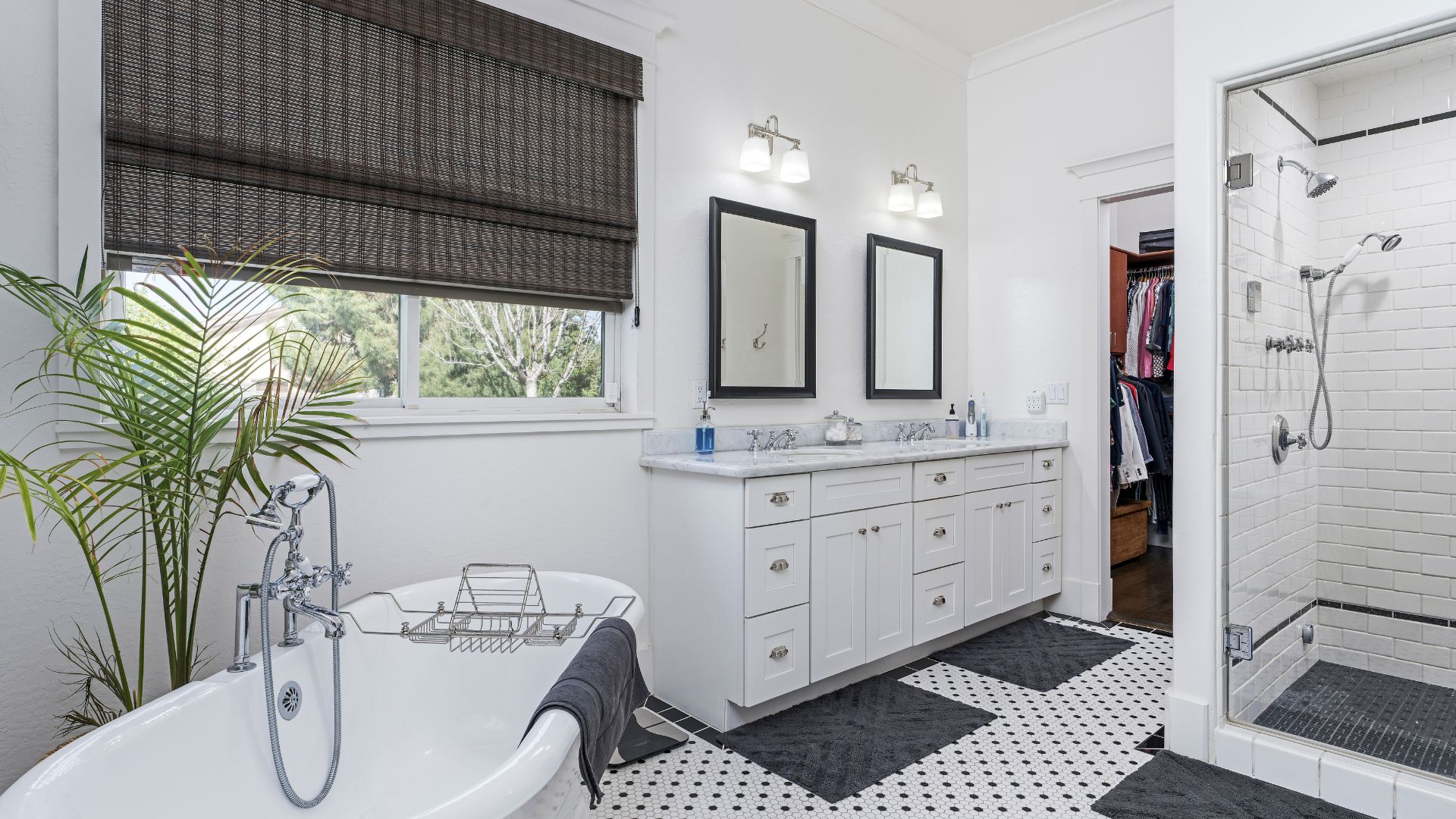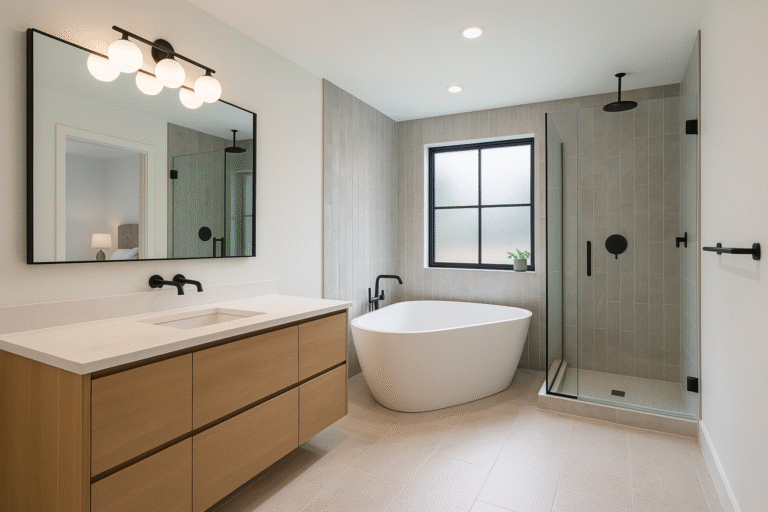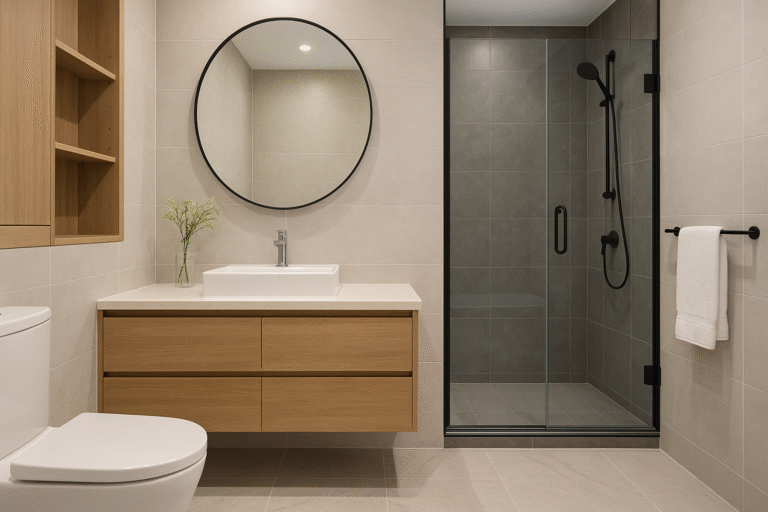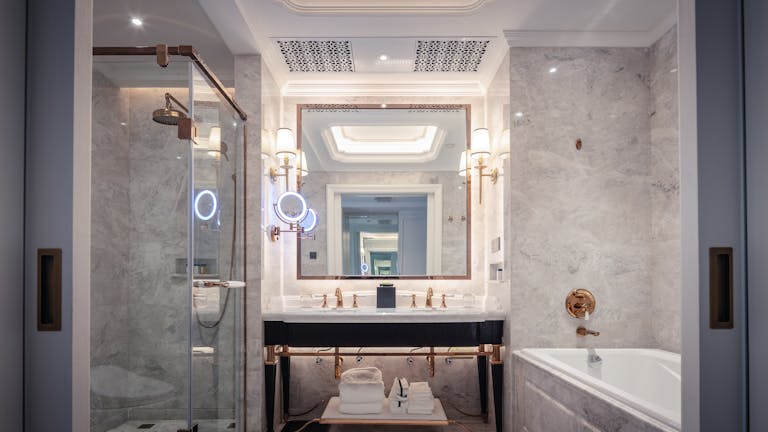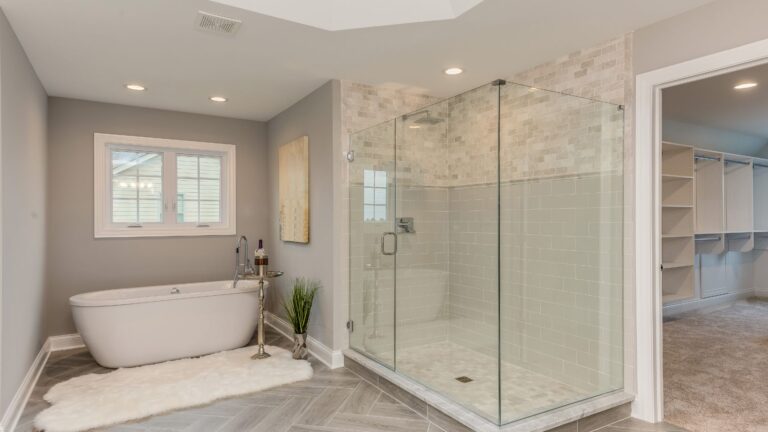Why Lighting and Ventilation Matter More Than You Think
Ever wondered why your bathroom still feels gloomy or musty, no matter how new it is? If your morning routine feels like it’s happening in a cave or a sauna, there’s a good chance your lighting and ventilation aren’t pulling their weight. When remodeling or upgrading a bathroom, most homeowners focus on the fun stuff—tiles, vanities, or that dreamy rainfall shower. But lighting and airflow? These often get ignored, and that’s a costly mistake.
Smart lighting and proper ventilation do more than make your bathroom look and feel better. They directly affect safety, moisture control, and energy efficiency. This guide will help you make strategic decisions around lighting placement, fixture types, fan sizing, and natural airflow. Whether you’re designing a small powder room or a full primary bath, understanding the core principles of lighting and ventilation will help you optimize every inch.
Understanding the Foundations of Bathroom Lighting
What’s the best way to light a bathroom without shadows or glare? If you’ve ever stood under a light that made you look like a horror movie character, you know bad lighting isn’t just about brightness—it’s about where and how the light is placed. In bathrooms, this becomes especially important because it affects everything from grooming accuracy to ambiance.
That’s where lighting layers: task, ambient, accent come into play. Task lighting, like sconces on either side of the mirror, ensures you can see clearly for shaving or applying makeup. Ambient lighting fills the room and sets the tone, often provided by ceiling-mounted fixtures. Accent lighting is the cherry on top, highlighting architectural features or adding mood lighting for spa-like relaxation. Getting these layers right is the secret to a bathroom that functions well and feels luxurious.
Matching Your Lighting Design to Bathroom Size and Layout
Have you ever asked, “How much lighting do I really need for a small bathroom?” The answer depends not just on square footage but also on the room’s layout, colors, and surface reflectivity. A compact bathroom with a dark color palette will need more intense or layered lighting compared to a larger bathroom with light-colored walls that naturally reflect more brightness.
For long or narrow spaces like galley-style bathrooms, consider evenly spaced ceiling lights to eliminate shadows in corners. For square-shaped rooms, recessed ceiling lights combined with vanity lighting often work best. If you’re lucky enough to have a bathroom with high ceilings, you might even explore pendant lights or a small chandelier for a touch of elegance, though it’s important to keep all fixtures rated for bathroom safety zones.
Choosing the Right Bulbs: Color Temperature and CRI
Does the type of light bulb really make a difference in your bathroom? Absolutely. Many homeowners don’t realize that the bulb’s color temperature and Color Rendering Index (CRI) can impact both the atmosphere and practicality of the space. For bathrooms, a color temperature around 2700K to 3000K offers a soft white glow that mimics natural daylight without being too harsh.
High CRI bulbs (90 or above) are ideal for grooming areas because they render skin tones and makeup colors more accurately. This helps prevent those frustrating moments when your makeup looks perfect in the mirror but completely off in natural light. LED bulbs are a great choice here—they’re energy-efficient, long-lasting, and available in multiple tones and brightness levels.
Energy Efficiency Starts with Lighting Choices
If you’re wondering, “How can I make my bathroom lighting more energy-efficient?” you’re not alone. The push toward greener home upgrades makes this an important consideration. Choosing LED fixtures over traditional incandescent bulbs is one of the easiest ways to cut down on electricity bills and environmental impact.
Energy-efficient lighting in bathrooms doesn’t mean sacrificing brightness or style. Many LED fixtures now come with dimmable functions, smart timers, and motion sensors, which can save even more energy. Dimmers let you adjust the mood while reducing power usage, and motion sensors are perfect for powder rooms or kids’ bathrooms where lights are often left on unnecessarily.
Bathroom Ventilation: The Overlooked Moisture Manager
Why does my bathroom mirror fog up so fast, and why does the room stay damp for hours? If you’ve asked these questions, you’re probably dealing with poor ventilation. Good ventilation isn’t just about comfort—it’s essential for protecting your home from long-term moisture damage, mold growth, and indoor air quality issues.
The purpose of any bathroom ventilation system is to remove humid air and odors efficiently, especially after showers or baths. You have two primary ventilation sources: mechanical fans and natural airflow through windows. Each has its place, but for most bathrooms, a fan is non-negotiable, especially if the room lacks exterior walls or operable windows.
Choosing the Right Exhaust Fan for Your Space
Ever find yourself wondering, “What size bathroom exhaust fan do I need?” This is where understanding how to choose exhaust fans (CFM guide) becomes essential. CFM stands for Cubic Feet per Minute and measures how much air the fan can move. A small half-bath typically needs a fan rated at 50 CFM, while a larger bathroom with a tub and shower combo may need 100 CFM or more.
Besides CFM, consider noise level (measured in sones), energy efficiency, and special features like humidity sensors. Some high-end fans even come with integrated lighting or Bluetooth speakers. Just make sure your fan is vented to the exterior—not the attic—or else you’re just pushing moist air to another problem area.
The Ongoing Debate: Window vs. Mechanical Ventilation
Is a window enough for proper bathroom ventilation? Some building codes allow it, but this window vs. mechanical ventilation debate isn’t one-size-fits-all. A window provides natural ventilation and daylight, which is great for passive airflow, especially in dry climates. However, it’s unreliable in winter or rainy weather and doesn’t automatically activate when needed.
Mechanical fans, on the other hand, offer consistent performance regardless of the season or user habits. Many homeowners now opt for both—windows for fresh air and fans for functional reliability. The key is balance: a properly sized fan, used consistently, will do the heavy lifting, while windows enhance the air quality and natural feel of the room.
Preventing Mold and Moisture Buildup
Have you noticed musty smells, bubbling paint, or persistent condensation? These are all signs that moisture is trapped in your bathroom. Left unchecked, this can lead to mold growth, damaged drywall, and even structural issues. Bathrooms are one of the wettest areas in any home, so staying ahead of moisture problems is essential.
Effective ventilation, water-resistant surfaces, and regular maintenance form a three-pronged approach to moisture control. Sealing grout lines, using mildew-resistant paint, and regularly cleaning exhaust fans all help reduce risk. If you’re seeing signs of deeper issues, check out our guide on how to detect hidden leaks behind walls, which covers tools and tips for early detection.
Lighting and Ventilation in Different Bathroom Types
Should a guest bathroom be ventilated the same way as a master bath? Not necessarily. Guest bathrooms tend to be smaller and used less frequently, so a basic fan and minimal lighting may suffice. Master bathrooms, however, demand a higher level of planning. They’re typically larger, see daily use, and often include both tub and shower areas.
For powder rooms, consider motion-sensor lighting and low-noise fans for a more pleasant guest experience. In ensuite bathrooms, especially those without windows, prioritize smart fans with humidity control and layered lighting to create both function and ambiance. The choices should reflect how often the space is used and by whom.
Avoiding Common Lighting Mistakes
If you’ve ever walked into a bathroom and felt blinded or couldn’t see your face clearly, you’ve experienced poor lighting firsthand. One of the common lighting mistakes & fixes is relying solely on an overhead light. Ceiling fixtures cast shadows under your eyes, nose, and chin—making grooming a challenge.
Another mistake is using mismatched color temperatures. Combining warm and cool-toned bulbs creates visual confusion. Stick with one consistent tone throughout the bathroom for a harmonious look. Lastly, don’t skip the dimmer switches. Being able to tone down the lighting for late-night bathroom visits is both practical and comforting.
Planning for Natural Light Without Sacrificing Privacy
How do you let in natural light without putting your privacy at risk? Skylights, frosted windows, and transoms are excellent solutions. Skylights bring in daylight without direct sightlines, while frosted or textured glass maintains privacy in wall-mounted windows. Another trend is using high windows near the ceiling to let in light while keeping the outside world out.
Natural light can also reduce reliance on electric lighting, especially during the day. It’s energy-efficient and improves the bathroom’s overall vibe. That said, it shouldn’t replace mechanical ventilation unless your climate and bathroom layout truly support it.

Conclusion: Design a Brighter, Healthier Bathroom from the Inside Out
Planning bathroom lighting and ventilation may not be the flashiest part of a remodel, but it’s one of the most important. The right setup ensures safety, improves daily comfort, controls moisture, and even helps cut energy bills. From mastering lighting layers: task, ambient, accent to picking the right fan using a CFM guide, every detail makes a difference.
Don’t let your dream bathroom be dim or damp. Whether you’re building new or remodeling, thoughtful planning around lighting and airflow will pay off in the long run.
FAQs
What’s the ideal brightness for a bathroom?
Aim for 75–100 lumens per square foot. Use a combination of ambient and task lighting to achieve this comfortably.
Can I install any exhaust fan in a bathroom?
No. Make sure it’s rated for wet areas and sized appropriately using the CFM guideline.
Is natural ventilation enough for a bathroom?
In some cases, yes—but it’s not always reliable. A mechanical fan ensures proper airflow regardless of weather or user habits.
How do I prevent mold in my bathroom?
Use proper ventilation, clean regularly, and seal all porous materials. You can also learn more in our post on mold risks in poorly ventilated spaces.
Should I use warm or cool lighting in the bathroom?
Warm white (2700K–3000K) is generally best. It mimics daylight and flatters skin tones.

